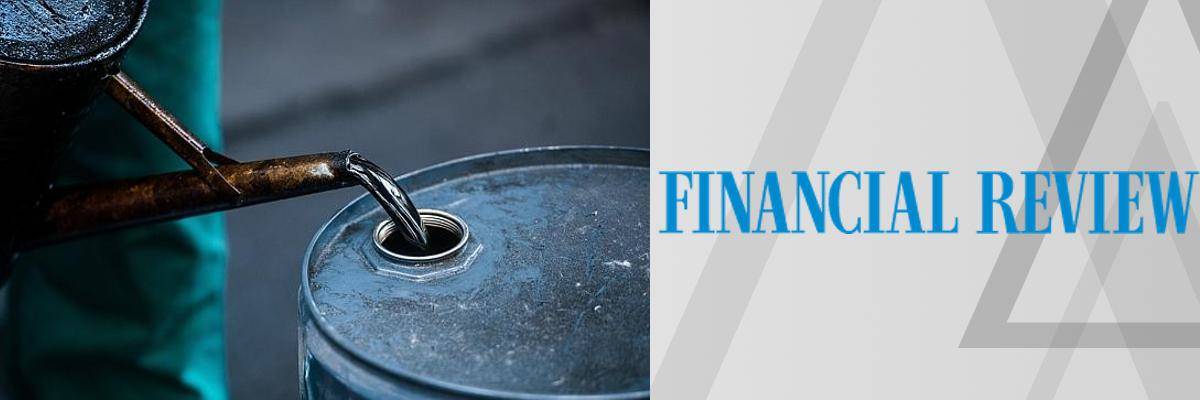

An awful lot has been written about the drop in the price of oil, and the resultant fall in the value of companies which at first glance should be the beneficiaries of it. The simple first round economic effect when oil drops in price is that users of oil benefit and their company share prices rise. But it didn’t play like that, for weeks. In fact, it only rallied a few days ago, after the US Fed re-iterated its accommodative position.
The temptation would be to just pretend that it’s all ok, now that the market has gone back up. But the failure of the markets to move initially when oil fell signals other deeper questions. So, is something else going on?
One explanation which has not been mentioned much is the future of oil itself.One explanation which has not been mentioned much is the future of oil itself, in the context of structural change to the industry – from competing technologies like solar, wind and gas, with flow-on implications for batteries, power stations, even electric cars and autonomous vehicles. Are these structural, disruptive factors also playing on investors’ minds, and being hinted at by the market’s shoot-first reaction (with oil) and subsequent broader market sell-off?
I am not suggesting that the structural story was top of mind in the sell-off, or even significant. But attribution of reasons for market behaviour is often uncertain – especially at times when disruption starts to play into the equation. (Consider the music companies during the first few years of the on-line music revolution).
First, some facts about the oil supply/demand equation. The International Energy Agency (IEA) and OPEC both downgraded their 2015 forecasts for oil demand – OPEC, for example, cut 2014 and 2015 use by 0.12 million bpd. Some commentators have observed that the 2015 oil demand re-appraisal amounts to no more than 0.2 per cent of current 29 million barrels per day. Others say it is more, but not materially so.
There is also a longer game here in business strategy, as oil producers hold production up to force the shale oil producers into bankruptcy.
It is also true that US consumers overall are actually lightening up on traditional oil usage (and have been doing so since 2005) – by driving less or switching to more efficient cars, but also moving to other fuel sources like gas and solar. The chart below tells some of the oil story – about where considered opinion thought it was going and where it actually went.

Comparison of Actual US Oil Consumption, with that that would have been expected if prior growth trend held. Actual based on US Energy Information Administration data. Source: Oilprice.com
There was also talk that the oil price fall might be the beginning of a kind of oil sub-prime, with nervousness about counterparty risk at sovereign level following the sell-off, as suggested by the huge slide in the oil- dependent rouble, among other financial instruments include sovereign debt in the BRIC’s, and the flight to safe haven assets like the $US (the $A is off 9 per cent against the US this year).
Over and above all these, the long term structural oil uncertainty story must also be playing on investors’ minds given that both China and the US spent time at two world summits (one in Beijing, the other Brisbane) jawboning about cleaner air and reducing coal and oil pollution. In general, markets haven’t yet paid too much attention to the climate change debate – but they do arc up when countries start legislating change, which is what we are seeing. They also get interested when they hear that China is mandating a $US16 billion program to expand tenfold the number of charging poles in major cities to 236,000 by 2015.
These things make more sense when considering the -49 per cent reduction in the oil price (West Texas Intermediate) we have seen since the peak in June, or the -21 per cent fall we have seen since 1 December – much more so than would be suggested by a mere 0.2 per cent change in long term oil demand.
So all this explains the precipitous fall in oil, but what about the 4 per cent general sell-off in the market which has accompanied the oil price drop, remedied only after US Federal Reserve chair Janet Yellen read traders the Christmas story about how everything ended happily ever after?
SOMETHING BIGGER ON THE WAY
Might this be the start of something much larger still – a structural, value destructive sortie into the oil/transport/energy world which also takes a big bite out of industries previously considered beneficiaries of falling oil prices, like car makers. Is this part of the reason why Ford and GM are were down 10 per cent in the days after the oil price fell, having recovered somewhat with the broader market since then?
Behind the rally, markets actually seem to be suggesting that whatever benefit attaches to falling input costs because of lower oil prices may be more than offset by write-offs, labour dislocation and loss of earnings for those companies which are somehow part of the oil value chain, and that as these cuts roil individual companies they will become large and numerous enough to have an effect on the overall economy – and so the market fell. More broadly, oil and related industries (such as cars and trucks) account for a significant amount of the workforce, so a change to these industries could create dislocation which feeds into poor economic numbers at the macro level.
It’s consistent with the loss of economic value that has accompanied other disruptive changes – like the internet to retail jobs, or what the internet to phone companies.
Record companies never competed with phone companies for revenues, but they do in the new world.And while it’s true to say that some companies have made mighty wealth as a result of disruptive change – such as Apple and Google – the amount they have made does not match the value that has been destroyed in the world music publishers, record companies and retailers. Nobody can really know whether this is true, because one business model isn’t a straight swap for another (record companies never competed with phone companies for revenues, but they do in the new world). The argument about swapping analog dollars for digital pennies is absolutely a reality for the hordes of toilers in these casualties of the digital age.
The point about disruptive change is that it is, well, disruptive – and not necessarily in a good way.
If the change in the future of energy and energy consumption is being played out, then December 1, 2014, will be noted as the date that the real disruption started. Because it’s one thing for a few TV stations to lose their audiences, or for people to get about with the latest smartphones, but when disruption moves into the physical universe of transportation, logistics and energy – meaning how people move themselves and their goods from A to B, we are talking real disruption.
Even Reserve Bank governor Glenn Stevens made the point earlier this week when he said that the job that his father did, as a flight engineer, was now redundant, having been filled by a piece of software in the cockpit.
In November, I wrote that it would probably do investors well to review their holdings of coal and oil ahead of the change that is coming. A part of that change rolled through suddenly with the OPEC meeting, but it isn’t over. We are seeing this weakness continue. At some stage it will bounce, but the structural, disruptive story means any each subsequent bounce will be to below levels of the previous peak.
First published in The Australian Financial Review
Share this Post


